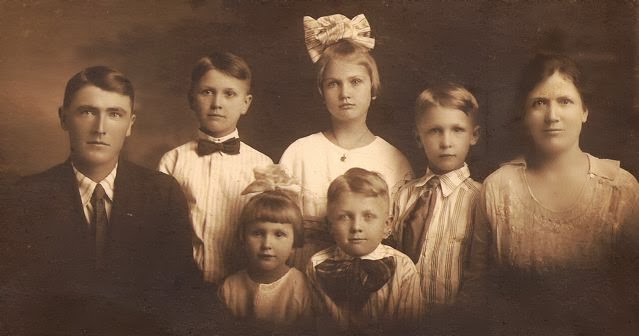Born in Germany in about
1700, Adam Harman immigrated to America about 1726, as did six brothers: Jacob,
Valentine, Mathias, George, Daniel, and John.1
Also accompanying Adam was his wife Louisa Katrina, whom he had married October
23, 1723,2
and two young sons, Adam Jr., born in Germany in 1724, and Henry, reportedly
born on the Isle of Mann in 1726 during the journey to America. Early records
of the Harman brothers in America can be found in and around Philadelphia
County, Pennsylvania, prior to 1734, in the form of land deeds and payment of
quitrents.3
In 1736, Adam Harman’s name can be found in records in the area of Strasburg,
Virginia, where his fifth son, Mathias was born.4
His other children included George, Daniel, Christina, Catherine, Philipina, Valentine,
Jacob, and a fourth daughter, name unknown.5
Although close examination of records clearly
shows Adam Harman on the New River as early as May 1745,[9]
some confusion has resulted from conflicting records regarding the date of his
arrival. The Draper-Ingles records list Adam Harman among several others
traveling with them into the area in 1748.[10]
For many years, the Draper-Ingles families received credit for establishing the
first English speaking settlement west of the Alleghenies. However, John Newton
Harman in his extensive research on the Harman family, Harman Genealogy, Biographical Sketches and Historical notes, 1700-1924,
quotes an except from a May 1745 road report made by surveyors Patton and
Buchanan to the County Court of Orange that points to Adam Harman’s place in
the area earlier than the Draper-Ingles families. The report notes various
points along the road and that the road ends at “Adam Harman’s on the New or
Woods river.”[11]
In 1923, J. N. Harman sent this
evidence to William E. Connelly, noted historian of the Mississippi Valley and
president of the Kansas State Historical Society. Connelly affirmed Harman’s
record-changing evidence. The following quote is taken from a statement
Connelly sent to J. N. Harman:
[The Patton and Buchanan] report was made in 1745. It is an
official record and is undoubtedly authentic and entitled to full credit. It
establishes the fact that Adam Harman was living at Gunpowder Springs, now
known as Eggleston Springs, in what is now Giles county, Va., in 1745. As his
house was already occupied and so well known as to be mentioned as the terminal
of this road being established by Orange County to the westward, it must have
been erected prior to 1745.
The date is three years before the accepted date of the
founding of the settlement at Draper’s Meadows [sic].
So the honor and distinction of having erected the first
dwelling and making the first permanent settlement of English-speaking people
in the Mississippi Valley goes to that sturdy pioneer, Adam Harman. For, though
he was German in blood and spoke the German tongue, he also spoke English and
was fully identified with the English westward movement in Virginia. He was
fully associated with the English and was a citizen of Virginia and subject of
Great Britain. His settlement was an English settlement.[12]
Since the record reveals that Harman had already
established his home on the New River prior to 1748, one can only speculate as
to why his name appears among the list of people accompanying the Draper-Ingles
families on their southwesterly journey.
 |
| Locations on the New River where Adam Harman lived. |
(c) 2014, Z. T. Noble.
1 John Newton
Harman, 47-49.
2 Harman
Family Bible, stored at Virginia Historical Society, The Center for Virginia
History, P. O. Box 7211, Richmond, VA 23211-0311. Copies of these records are
in the author’s possession. Also John Newton Harman’s book contains a
translation of the records, 50-51.
3 John
Newton Harman, 49.
4 John Newton
Harman, 50.
5 John Newton
Harman, 51.
6 Patricia
Givens Johnson, James Patton and the
Appalachian Colonists, (Verona, Va.: McClure Printing Company, Inc., 1973),
p. 89. Also Mary B. Kegley and F. B. Kegley, Early Adventures on the Western Waters, Vol. 1 (Orange, Va.: Green
Publishers, Inc., 1980), 223. Also John Newton Harman, 20, 23.
7 Johnson,
30; see after page 100, the 7th page, Johnson’s photo of St. Peter’s
Evangelical Lutheran Church, note names on marker. Also, John Newton Harman,
23.
8 M. B.
Kegley and F. B. Kegley, 223.
9 Patton and
Buchanan Survey Report, Augusta County, Virginia, Order Book 1, 1745-1747.
10 Hale, 16;
Johnson, 10.
11 Patton and
Buchanan Survey Report. Also Ann Brush Miller, Historic Roads of Virginia, Orange County Road Orders, 1734-1749, (Orange
County Historical Society, Virginia Highway & Transportation Research
Council, no date), 109. Also John Newton Harman, 49. Also, M. B. Kegley and F.
B. Kegley, 217.
12 John
Newton Harman, 56-57.

I am descended from Adam Harman's brother Jacob and am seeking permission to use the map called "Locations on the New River where Adam Harman Lived" in my family tree since it shows the location of Jacob's home. I will give you full attribution; I usually write something like, "map drawn by xxxxx and used by permission from xxxxx on date." Please contact me at smespedal@gmail.com. Thank you very much for your consideration. Your Harman articles are fascinating!!
ReplyDelete